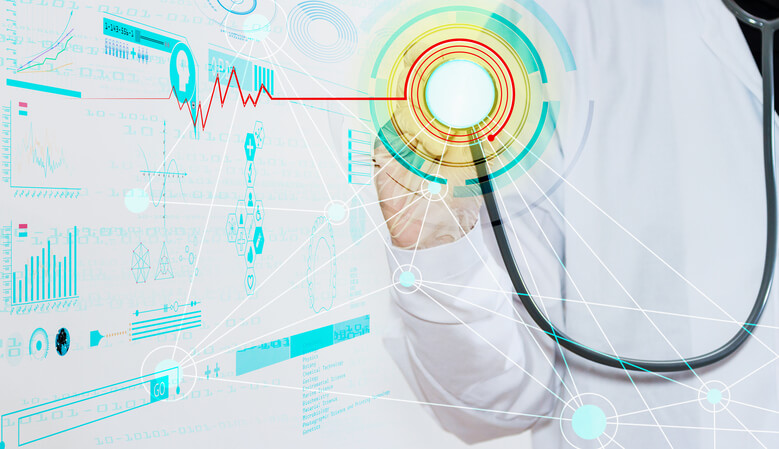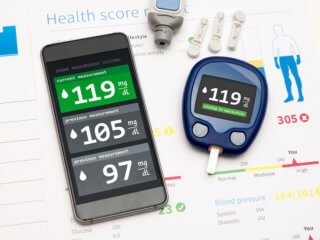With the rise of the digital health sector, we have been seeing a lot of new digital health technology The article talks of few such technologies which are making a mark in eHealth sector.
Latest digital health technology
Optimized integration of home ventilation through eHealth
The patient care regarding home ventilation has seen an exponential increase in the past few years. The problems leading to such a situation include the inability of general physicians to handle home ventilation systems as well as a shortage of skilled personnel in this domain.
The goals of this project include:
- Optimizing the care of home ventilation patients by creating an electronic documentation and networking solution based on open eHealth standards.
- Sustainable improvement of documentation and communication processes between the inpatient and outpatient
- Reducing the risk of loss of data and misinterpretation of information.
- Providing a solution to compensate the shortage of skilled nursing personnel
Event@home is a new type of functional, intersectional documentation and networking web-based solution for EHealth standards.
One of the most important partners in this project is Smart-Q, which assists in providing web based solutions. Smart-Q is actively involved in a variety of EHealth projects covering all aspects of the German population. Some of the products designed by Smart-Q-
- ISPC- Market leader in web-based, mobile patient record for clinical palliative medicine and care
- Pain Pool- Web-based patient survey system with a focus on pain documentation.
- PainApp-Project for self-documentation of pain for older adults at home and is connected via a web-based information platform.
- StudyPool-Web-based survey system used by universities and hospitals for patient interviews and studies.
Event@home has an extremely progressive three year timeline with the first year being primarily being devoted to data exchange, actual and target state analysis, semantics and the creation of the implementation guideline.
The second year will focus on the software development aspect and prototype implementation. The development program will be comprehensively patient-centric. The prototype implementation will include real-time testing in hospitals. Lastly, as the final stage of the project, economic and financial factors are also taken into account.
| Recommended for you | |
| Interoperability in digital health sector | |
| Role of policy in digital health revolution | |
| 10 Hottest mHealth starups in India |
Regional integration of intensive and emergency care: Aachen, a case study
Founded in 2012, this portfolio covers a broad range of telemedicine projects, like
- Emergency medicine-TemRas, Telenptarzt
- Intensive Care Medicine-Tele intensive Medizin (TIM), Service spectrum: Ranging from consultation on demand to 24/7
- Cardiology-Heart Failure & Telemonitoring
The initiatives are the result of personal adversities affecting the population as a whole. The problems include demographic changes, aging population and a scarcity of trained workforce in health care.
The proposed telemedicine concept is to connect two remote hospitals managed and controlled centrally from a hub located at the University of Aachen. The connection platform is an electronic database for storing and processing patient data. Additionally, it offers a platform for the second opinion, remote diagnostic support but the main focus of the project is facilitating daily-tile rounds together with the medical colleagues.
Another aspect related to this project is the quality of care and reduction of mortality. Data analytics have confirmed through various detailed surveys and studies that TeleICU coverage was responsible for reducing the rate of ICU mortality.
The efficiency of the critical care process shows that the intensive care medicine was able to shorten the length of stay in critical care units irrespective of the severity of illness. Statistically, almost 75% of the ICU across the hospitals will benefit from this concept.
Results:
- This model has been successful in the effective screening of sepsis.
- The delay in the antibiotic administration has been brought down to one hour in emergency cases.
- It has cut down on unnecessary transfer of critically ill patients
- It has reduced delayed shipments by early detection and identification.
- Improvement in sharing expertise related to high-level ICU care.
Telemedical support can fill the gap of a therapy-free interval but also improve the availability and accessibility of emergency physicians. This kind of support is offered to a diverse range of urgency facilities like hypertensive emergencies, acute stroke, gastrointestinal emergencies, and trauma. Technical evolvement has had a profound effect on the Telemedical services and has provided the necessary communication platform having a good range of operability and bring down the rate of technical failure to below 1%.
Aachen Case Study:
- The Aachen experience has enabled to share expertise beyond hospital boundaries.
- Improvement in guideline adherence
- New and Innovative work environment
- Attractive employment opportunities.
Concept of enabling meaningful exchange of health data
Motivation:
- Demographics in population
- Increased challenge to provide healthcare everywhere at similar levels
- More interaction with general practitioners and specialists
- Telemonitoring brought about positive effects in cardiovascular diseases.
- Procedures with higher complexity
Telemonitoring in cardiology is an established field of medicine, but the decreasing number of specialists in rural and countryside hospitals has brought about a sudden dearth of trained professionals. Telemonitoring could be beneficial by providing:
- Continuous support for patients
- Early detection of changes
- Reduced hospitalization
- Comprehensive information and evaluation to physicians
The problem with such large amounts of data is the fact that it is unstructured which makes it difficult for specialists to comprehend and analyze. So to eradicate this issue, understanding of the workflow process is imperative.
Goals:
- Analyzing workflows for follow-up in patients with implanted devices
- Different care procedures: Hospital v/s Ambulatory care
- Identification of related information (sources, handling, etc.)
- Concept of an open platform for exchange of relevant data
- Identifying available ideas for cross enterprise communication
- Motivating vendors of devices to provide interfaces
- Identifying gaps in existing interoperability profiles
Results:
- Telemonitoring for cardiac devices is just one aspect in patients suffering from more than one disease
- Information should be available in the medical context- Avoid closed, proprietary solutions
- In recognition of European and International Projects, there is a clear mandate for an Integrating the Healthcare Enterprise (IHE)-based communication
Integrating the heat Enterprise (IHE) is an international initiative of users and vendors for improving interoperability in healthcare. IHE uses a standardized and open process for the development of interoperability of profiles with specific areas of medicine active, for example, radiology, cardiology, pharmaceuticals, etc.
Speakers: Heike Dewenter, Dr. Robert Deisz, Prof. Peter Mildenberger
Video URL: https://www.youtube.com/watch?v=-PsgfMKL3y4&list=PL98iSagl_rnLG0GhJpYBZI0mdyii3R6Qj&index=39
Upload Date: 4th December 2015
Video code: GS181115 06
Image credit: www.istockphoto.com

















